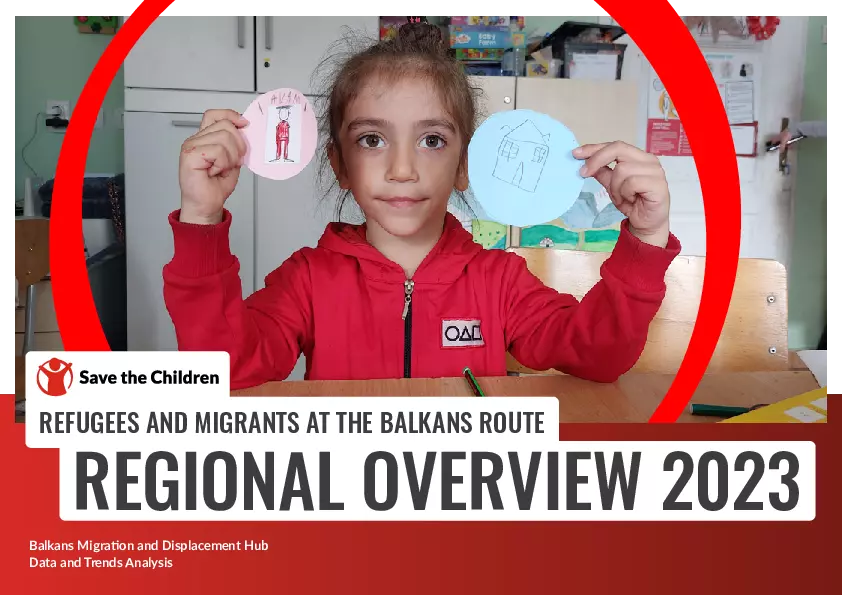
Reports
Refugees and Migrants at the Balkans Route Regional Overview 2023
Publication year:
2024
English
Format:
PDF (1013.9 KiB)
Publisher:
Save the Children International,Save the Children North West Balkans
Data and Trend Analysis (DATA) Refugees and Migrants at the Western Balkans Route Regional Overview 2023 describes key trends in migrations in the region, detailing information about the number of people on the move, demography (age, sex, country of origin, etc.), behavioural patterns, and routes in use – with a focus on children, particularly unaccompanied children.
Key trends showcased in this report:
- The Balkan route remained an integral part of the Eastern Mediterranean Route, used by children and adults from the Middle East, East and West Asia, and African countries seeking protection in Europe. The border crossing number dropped around 31% compared to 2022, from 144,197 to 99,068 cases.
- Most often reported nationalities were Syrians, Afghans, and Turks, while a significant number of Palestinians were registered in Greece. The number of registered women on the Western Balkan route more than doubled compared to 2022.
- The data indicate that most asylum seekers from Syria and Afghanistan arrived in Europe through the Balkans, although many of them were not identified and registered in transit. The number of Syrians increased on the route in 2023, while in parallel the number of Syrians as first-time asylum applicants in the EU increased from 131,790 in 2022 to 183,035. Afghanistan remained the second country of origin for EU arrivals for six consecutive years (100,935 in 2023, or 9.6 % of the EU total) and most often registered in Croatia (19,259 in 2023).
- The total number of unaccompanied children applying for asylum in EU countries peaked at 41,525. Most of the asylum applications were submitted by unaccompanied Syrians (13,500) and Afghans (12,090), children who most frequently travel through the Balkan route.
- Increasingly complex mixed migration movements in the Balkans include nationalities that do not require visas to enter Western Balkan countries, from where they attempt to cross irregularly into the. In 2023, an increasing number of people with Turkish passports, and, to a lesser extent, people with Russian passports, entered Serbia and Bosnia and Herzegovina, initially not registering intent to seek asylum. Turkish passport holders were the second most registered nationality (11,199 people) among asylum seekers in Croatia in 2023. First-time asylum applicants from Türkiye represented 8,6 % of the EU total, with 89,970 applicants.
- The Balkans are increasingly facing labour migration that might lead to numerous risks, including exploitation, lack of opportunities for families, and trafficking. Workers coming to the region sometimes decide to continue their journey towards Western European countries.
Read full abstract
Authors
View & Download
English
1 Documents
Document information
Authors
Format
Content type
Region
Rights
© Author/Publisher
Found a mistake? Help us improve!
If you have noticed a document assigned to the wrong author or any other inaccuracies, let us know! Your feedback helps us keep our data accurate and useful for everyone.
Share
Link
